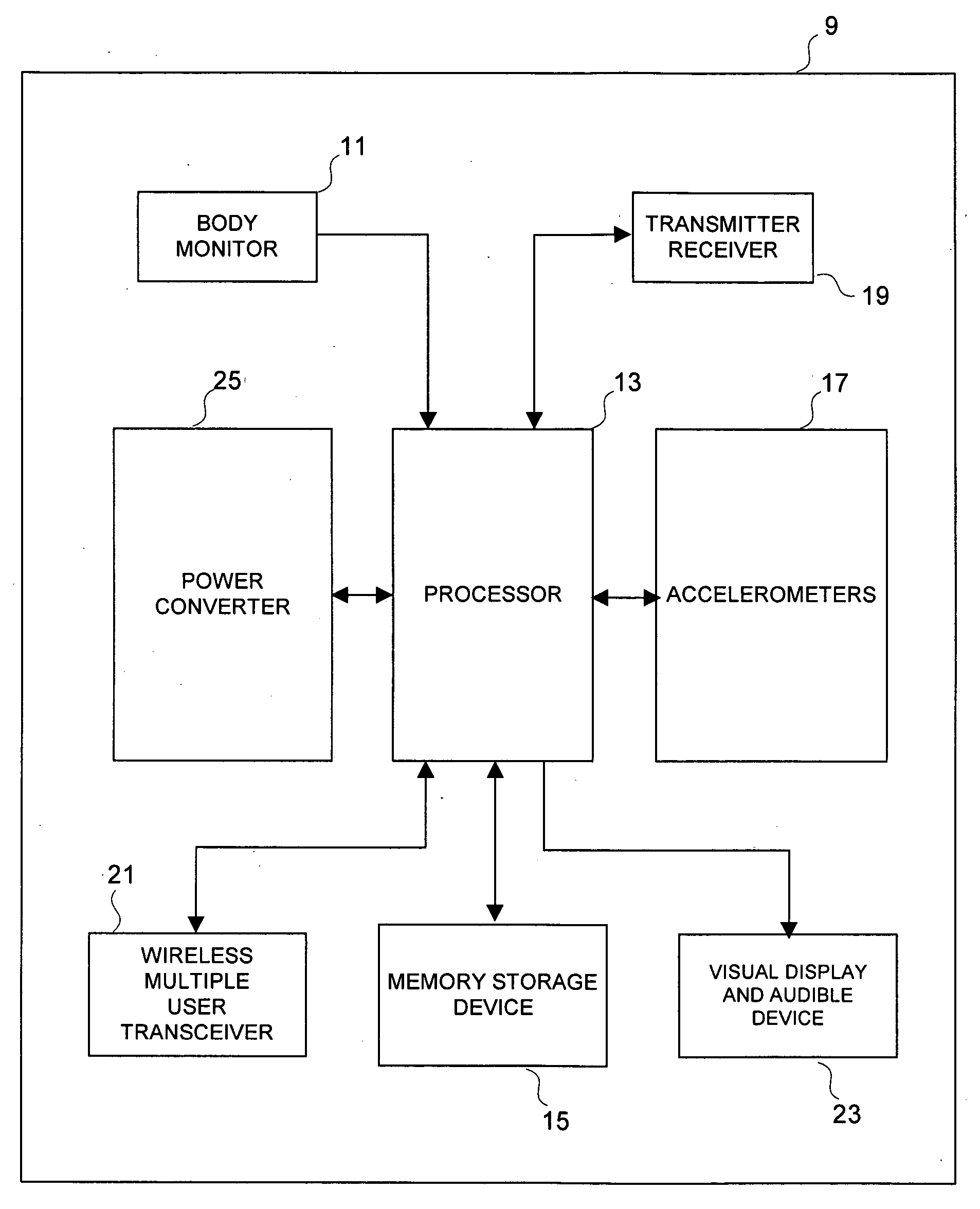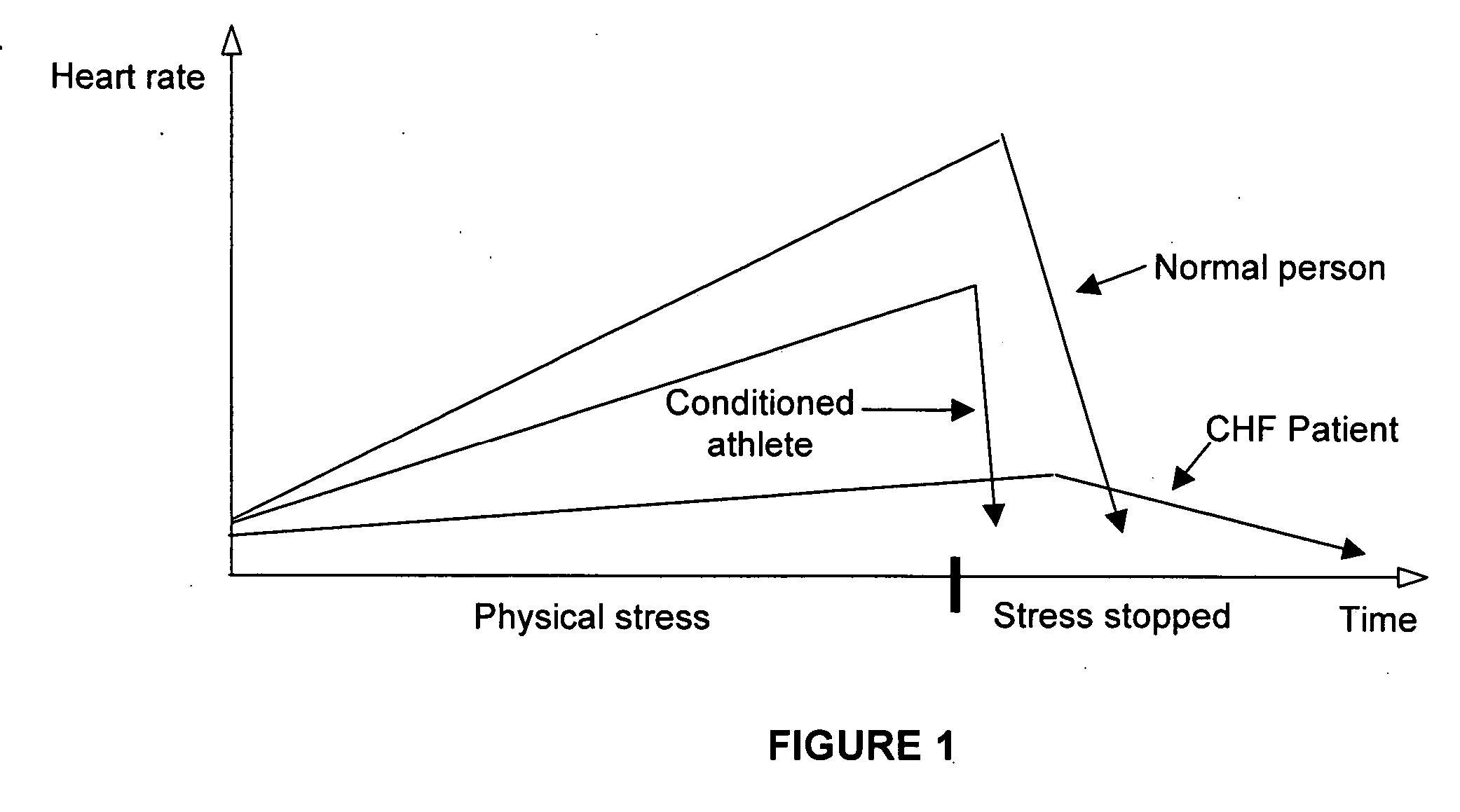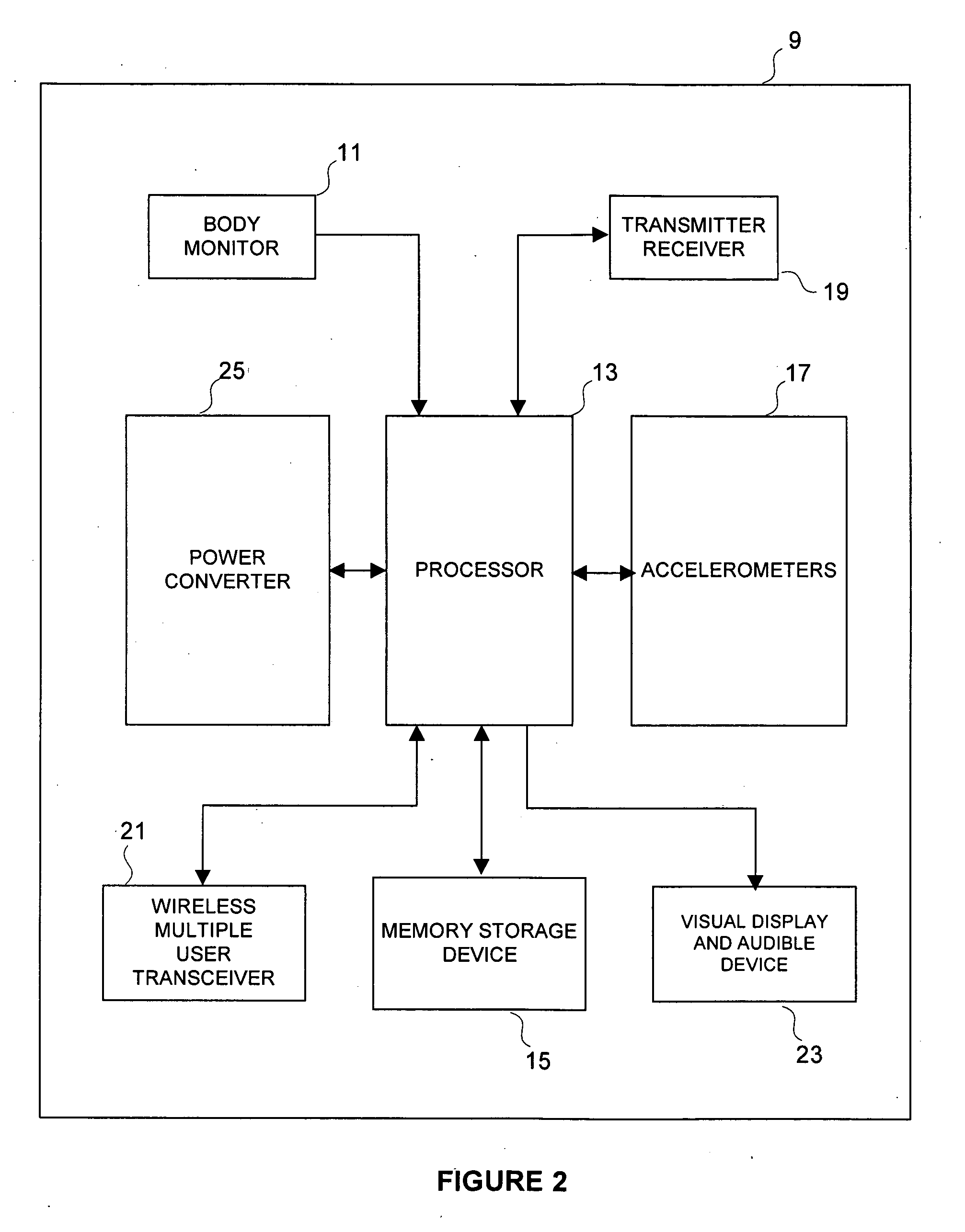Method and apparatus including altimeter and accelerometers for determining work performed by an individual
- Summary
- Abstract
- Description
- Claims
- Application Information
AI Technical Summary
Benefits of technology
Problems solved by technology
Method used
Image
Examples
Embodiment Construction
Definitions:
1. TEEM=Total Energy Expenditure Measurement 2. Acceleration (A)=Distance / Time2=D / T2 3. Force (F)=Mass×Acceleration=M×A 4. Mechanical Work (Wm)=Force×Distance=F×D or by substituting (3) into this equation for F: Wm=M×A×D 5. Maximum Change in Dynamic Acceleration (MCDA) is a mathematical treatment of the TEEM data which doesn't change acceleration values or dimensional units. 6. Total Maximum Change in Dynamic Acceleration [(MCDA)T−Area] is the sum of the area under each (MCDA) Time (T) curve and is equal to the integral, ∫yidx, where yi=height of a rectangle segment, (i), with infinitesimal base width, dx. After integration, [(MCDA)T−Area] is equal to (Σyi)(x); or since: (Σy1) is proportional to (MCDA) and (x) proportional to (T), then by substitution: [(MCDA)T−Area] is proportional to (MCDA)(T). 7. VO2 Max is measured maximum oxygen consumption rate of an individual during an aerobic stress test and is usually expressed as VO2 / M.
Assumptions: 8. MCDA has the ...
PUM
 Login to View More
Login to View More Abstract
Description
Claims
Application Information
 Login to View More
Login to View More - R&D
- Intellectual Property
- Life Sciences
- Materials
- Tech Scout
- Unparalleled Data Quality
- Higher Quality Content
- 60% Fewer Hallucinations
Browse by: Latest US Patents, China's latest patents, Technical Efficacy Thesaurus, Application Domain, Technology Topic, Popular Technical Reports.
© 2025 PatSnap. All rights reserved.Legal|Privacy policy|Modern Slavery Act Transparency Statement|Sitemap|About US| Contact US: help@patsnap.com



